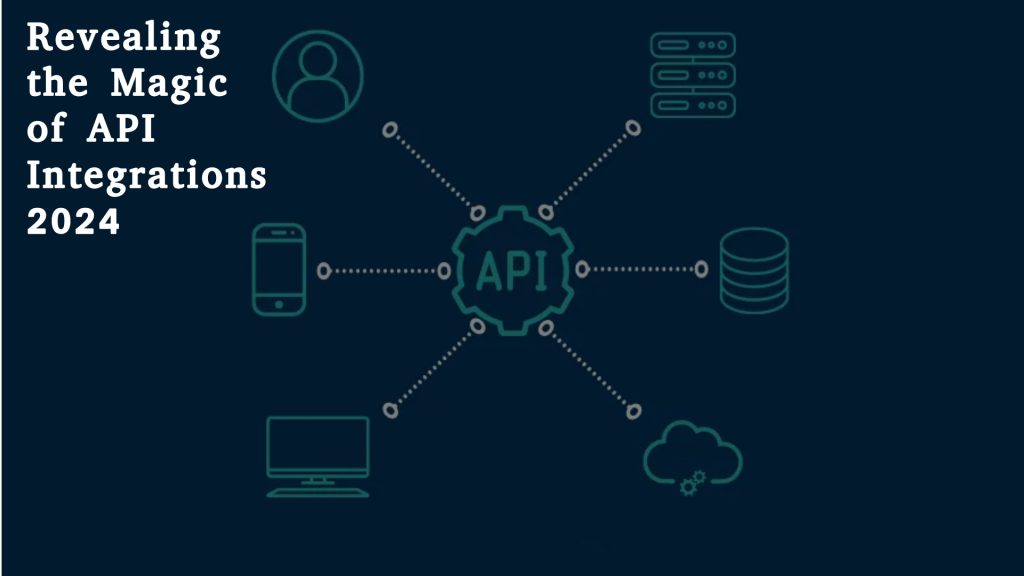
Table of Contents
Have you ever before asked yourself just how your preferred applications perfectly interact with each other, sharing data and functionalities as if by magic? Well, it’s not magic– it’s API integrations! In today’s interconnected electronic landscape, APIs (Application Programs User interfaces) play an important role in making it possible for different software program systems to interact with each other, creating a more cohesive and reliable experience for customers. Let’s dive into the world of API assimilations and explore exactly how they power the interconnectedness of our electronic lives.
Comprehending API Integrations: A Gateway to Digital Connectivity
API integrations work as the bridge between various software applications, enabling them to connect and share data in real time. Think about APIs as messengers that facilitate the exchange of information between various platforms, making it possible for seamless communications and performances throughout diverse digital communities.
Among the vital advantages of API assimilations is their ability to simplify procedures and boost user experiences by making it possible for applications to utilize each other’s capabilities without having to reinvent the wheel. For example, think about a scenario where you schedule a ride-sharing service with a traveling app. Behind the scenes, API integrations make it possible for the travel application to connect with the ride-sharing solution, and seamlessly bring real-time information on readily available rides, costs, and ETAs, all without ever leaving the application user interface.
The Flexibility of API Integrations: Powering Innovation Throughout Industries
API assimilations are not limited to specific sectors or use cases– they power technology across a broad range of sectors, from e-commerce and money to healthcare and enjoyment. By allowing inconsonant systems to interact and share information, APIs drive performance, technology, and scalability, equipping companies to supply even more worth to their consumers while staying competitive in today’s vibrant market landscape.
In the e-commerce industry, for example, API assimilations enable smooth interactions between internet stores, repayment entrances, delivering suppliers, and stock management systems, improving the entire acquisition process from surfing to checkout. By integrating with third-party services such as settlement processors and delivery providers, e-commerce platforms can supply consumers with a seamless shopping experience while automating backend processes to boost functional effectiveness.
Unlocking New Opportunities: The Role of API Integrations in Digital Makeover
In a period specified by digital makeover, API assimilations serve as drivers for advancement, allowing organizations to adjust to evolving market needs, capitalize on emerging modern technologies, and unlock brand-new revenue streams. By leveraging APIs to connect disparate systems and data resources, companies can break down silos, foster partnerships, and harness the complete capacity of their electronic assets to drive growth and client contentment.
Consider the healthcare market, where interoperability and information exchange are important for supplying quality individual care and improving professional results. Via API integrations, healthcare providers can perfectly share individual records, laboratory outcomes, and therapy strategies across inconsonant systems, helping with partnerships between doctors, specialists, and other stakeholders to supply coordinated care and individualized treatment paths.
The Building Blocks of Connectivity: Discovering API Protocols and Requirements
Behind every effective API assimilation lies a collection of methods and standards that govern exactly how various systems communicate and exchange information. From Relaxing APIs and SOAP (Simple Item Gain Access To Method) to GraphQL and WebSockets, various protocols supply different approaches to creating and executing APIs, each with its strengths and utilized situations.
Relaxed APIs (Representational State Transfer) have emerged as among one of the most widely taken-on criteria for developing web APIs because of their simplicity, scalability, and assistance for stateless communication. By sticking to REST principles such as statelessness, consistent source identifiers (URIs), and basic HTTP approaches (OBTAIN, MESSAGE, PUT, DELETE), designers can develop APIs that are user-friendly, adaptable, and interoperable, making them perfect for a vast array of applications and utilize situations.
Best Practices for Seamless Combination: Browsing Obstacles and Risks
While API combinations offer a myriad of advantages, they also come with their reasonable share of difficulties and intricacies. From safety and security concerns and versioning issues to dependence administration and price restricting, developers should navigate various pitfalls to guarantee smooth and trusted interactions between various systems and services.
One typical challenge in API integration is dealing with authentication and gain access to control to safeguard sensitive information and protect versus unapproved accessibility. By implementing durable authentication mechanisms such as OAuth 2.0 and API keys, designers can enforce gain access to plans and confirm users and applications, reducing the risk of information violations and unapproved activities.
Future Trends and Emerging Technologies: The Evolution of API Integrations
As modern technology continues to progress at a quick rate, so as well do the capabilities and possibilities of API assimilations. From the increase of microservices architecture and serverless computing to the fostering of machine learning and AI-driven APIs, organizations are discovering new methods to utilize APIs to drive development, agility, and competitive advantage in the electronic age.
Microservices design, for instance, has acquired a grip as a paradigm for developing scalable and resilient systems made up of freely paired, individually deployable solutions. By breaking down monolithic applications right into smaller, specialized services that interact using APIs, organizations can attain better agility, scalability, and mistake isolation, making it possible for quicker advancement cycles and simpler maintenance.
Verdict: Welcoming the Power of API Integrations
To conclude, API assimilations are the foundation of our interconnected digital globe, enabling smooth communication and partnership between inconsonant systems and services. From improving user experiences and driving development to enabling electronic change and opening brand-new possibilities, APIs play a main function in shaping the future of technology and driving organizational success in the digital age.
As organizations continue to welcome the power of API assimilations, it’s vital to prioritize protection, scalability, and interoperability to make certain smooth and trustworthy communications between different systems and services. By taking on the best methods, remaining abreast of arising fads, and welcoming a society of innovation, services can harness the full potential of APIs to drive growth, innovation, and client complete satisfaction in today’s dynamic and interconnected world.
Also Read Our Blog” Unveiling the Best Email Marketing Tools with Lookinglion2024
FREQUENTLY ASKED QUESTION: Debunking API Integrations
1. What is an API assimilation?
An API assimilation describes the process of connecting various software program systems or applications via APIs (Application Programs User interfaces) to allow them to connect, share information, and utilize each other’s capabilities in real time.
2. Why are API combinations important?
API combinations are important for promoting connectivity and interoperability between diverse systems, enabling companies to improve procedures, enhance user experiences, drive advancement, and unlock brand-new revenue streams.
3. Just how do API assimilations work?
API integrations work by making it possible for applications to communicate with each other with predefined interfaces and methods. Designers utilize APIs to define endpoints, information styles, and communication procedures, permitting systems to trade info and execute activities seamlessly.
4. What are some typical usage cases for API integrations?
Typical usage cases for API integrations consist of e-commerce platforms getting in touch with payment gateways and shipping companies, social media site systems incorporating third-party services for verification and web content sharing, and healthcare systems trading client information and medical records firmly.
5. What are the difficulties associated with API assimilations?
Difficulties associated with API assimilations consist of ensuring protection and compliance, managing dependencies and versioning, handling authentication and accessibility control, optimizing performance, and handling modifications in APIs and underlying systems.
6. Just how can organizations ensure the success of API combinations?
To guarantee the success of API combinations, companies ought to prioritize safety and security, scalability, and interoperability, follow the best methods for API design and application, utilize robust authentication systems, display performance and use metrics, and stay updated on emerging trends and technologies in the API landscape.
7. What are some emerging trends in API integrations?
Emerging patterns in API integrations include the adoption of microservices design, serverless computers, machine learning, and AI-driven APIs. Organizations are checking out new means to take advantage of APIs to drive advancement, dexterity, and competitive advantage in the digital age.
8. Just how can designers find out more concerning API assimilations?
Designers can discover more concerning API integrations by exploring paperwork and tutorials provided by API providers, participating in designer neighborhoods and online forums, going to conferences and workshops concentrated on API layout and combination, and trying out APIs in sandbox atmospheres.
9. What role do API combinations play in electronic change?
API integrations play a main function in digital change by making it possible for organizations to adjust to developing market needs, take advantage of arising modern technologies, break down silos, foster partnerships, and harness the complete possibility of their electronic assets to drive development, advancement, and consumer satisfaction.
For information please visit the website:: onlineearningtricks.com





